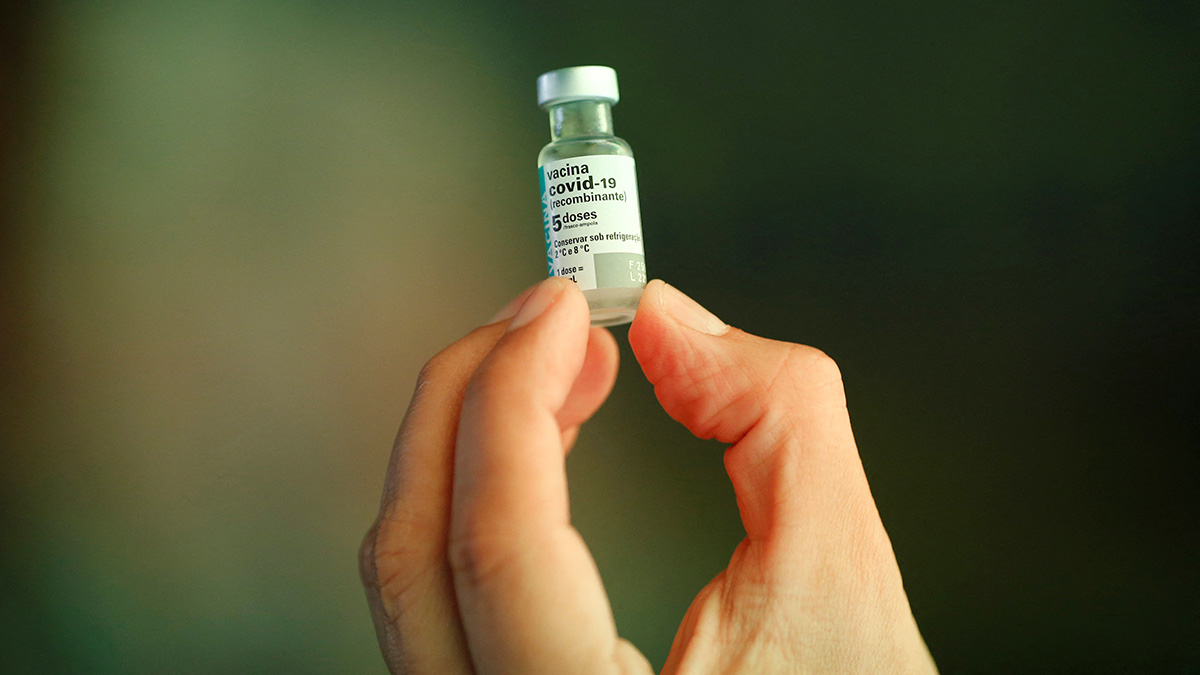As India awakened on Wednesday morning, news alerts on TV and mobile screens were ablaze with a headline announcing AstraZeneca’s initiation of a global withdrawal of its COVID-19 vaccine.
According to Reuters, the Anglo-Swedish pharmaceutical giant cited the emergence of multiple variant vaccines as the reason behind this move, stating that the availability of newer, updated vaccines had led to a surplus in the market. Consequently, demand for AstraZeneca’s Vaxzevria vaccine had dwindled, prompting the company to cease its manufacturing and supply. Additionally, AstraZeneca announced its intention to withdraw the marketing authorisations for Vaxzevria within Europe.
AstraZeneca earlier admitted in court documents that the vaccine causes side effects such as blood clots and low blood platelet counts. The company’s application to withdraw the vaccine was made on 5 March and came into effect on 7 May, according to the Telegraph.
Before celebrating AstraZeneca’s decision, consider this: the company’s move to withdraw its COVID-19 vaccine might not solely stem from an abundance of vaccines in the global market. Instead, some speculate it could be a response to the escalating reports of side effects associated with the vaccine. However, delving into the specifics of these claims falls under the purview of medical experts.
COVID and coffers
Regardless of the vaccine’s impact on people’s health, AstraZeneca appears content with its financial gains. In February 2022, AstraZeneca boasted record-breaking revenues with a significant portion attributed to its COVID-19 vaccine and the sales resulting from its acquisition of Alexion, a rare disease company worth $39 billion, a Financial Times report said. In 2021 alone, AstraZeneca reported a total revenue of $37 billion, marking a 38 per cent increase from the previous year, with $4 billion stemming from its COVID-19 vaccine, developed in collaboration with Oxford University. Ironically, even amid these financial successes, AstraZeneca’s COVID-19 vaccine garnered attention due to reports of rare blood-clotting side effects.
Impact Shorts
More ShortsIn a press release dated April 30, 2021, AstraZeneca disclosed that its vaccine, developed in partnership with the University of Oxford, generated $275 million in sales from approximately 68 million doses administered in the initial three months of 2021.
In 2020, AstraZeneca vowed not to capitalise on its vaccine during the pandemic, maintaining the discretion to decide when the crisis had abated. The University of Oxford collaborated with AstraZeneca due to its commitment to keep vaccine prices low. The company affirmed it would only seek profit once COVID-19 ceased to be a global threat. CEO Pascal Soriot reiterated this stance to the BBC, emphasizing their priority of safeguarding public health.
However, by November 2021, AstraZeneca began departing from its not-for-profit vaccine provision approach.
Responding to this shift, Nick Dearden, director of campaign group Global Justice Now, criticised AstraZeneca’s move, highlighting the dangers of entrusting publicly-funded science to pharmaceutical giants.
As of November 2021, AstraZeneca had generated $2.2 billion in sales from its vaccine during the initial nine months of the year. In the quarter ending on 30 September, 2021, the vaccine recorded sales of $1.05 billion, adding one cent to earnings per share, CNN reported.
Why AstraZeneca is a global pharmaceutical giant?
AstraZeneca is a revenue machine when it comes to global pharmaceutical companies.
AstraZeneca’s extensive portfolio spans various prescription drugs encompassing treatments for cardiovascular, respiratory, oncological, neurological and gastrointestinal ailments among others. Leveraging its global distribution network, the company strategically enters diverse markets worldwide, utilising robust sales and marketing strategies and significant investments to secure a prominent position globally. Additionally, collaborations and licensing agreements with fellow pharmaceutical entities contribute to its revenue streams.
The firm’s intellectual property holdings play a crucial role as it grants manufacturing and sales rights to other entities, further enhancing its financial performance. AstraZeneca also benefits from funding provided by government agencies, NGOs and research institutions, bolstering its fiscal health, a Pitchgrade report said.
A big focus for AstraZeneca is making new drugs resulting in the continual introduction of novel drugs to the market.
COVID dream run ends for AstraZeneca, but not for its money machine
AstraZeneca revealed impressive earnings for the first quarter of this year on 25 April this year, exceeding market expectations. The strong performance was fuelled by high demand for its popular drugs and consistent sales from partnerships. Notably, the company’s oncology division, its top-performing segment, saw a significant 26 per cent increase in sales to $5.12 billion. However, there was a decline in revenue from Vaccines and Infectious Diseases (V&I) due to reduced sales of COVID-19 mAbs and Vaxzevria.
“AstraZeneca had a very strong start in 2024 with substantial Total Revenue growth of 19% in the first quarter. Our strong pipeline momentum continued and already this year we announced positive trial results for Imfinzi and Tagrisso that were unprecedented in lung cancer, the data from both of these studies will be presented during the ASCO plenary in June. We are also looking forward to seeing the results of several other important trials throughout the year. At our Annual General Meeting we were pleased to announce a 7% increase in the annual dividend, and at our Investor Day on 21 May 2024 we will outline the evolution of our company, underscoring our confidence in sustaining industry-leading growth,” said AstraZeneca CEO Pascal Soriot commenting on the results.
For AstraZeneca, the heyday of its COVID-19 vaccine has come and gone. Despite lingering concerns about vaccine side effects, the company has quietly redirected its attention to new avenues of profit much before the world knew.
)